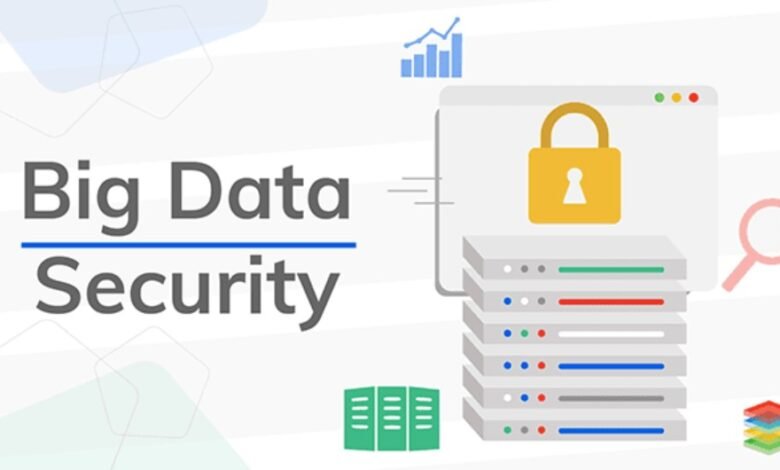Understanding Big Data Security: A Comprehensive Overview

In the era of digital transformation, big data has emerged as a powerful tool for businesses, governments, and organizations. It drives decision-making, improves customer experiences, and enhances operational efficiencies. However, the sheer volume, variety, and velocity of big data introduce significant security challenges. This article delves into the intricacies of big data security, exploring its importance, key challenges, strategies, and future trends.
The Importance of Big Data Security
Protecting Sensitive Information
Big data often includes vast amounts of sensitive information, such as personal data, financial records, and proprietary business information. Protecting this data from unauthorized access and breaches is paramount to maintaining trust and complying with regulations. A security breach can lead to significant financial losses, legal penalties, and reputational damage.
Ensuring Data Integrity
Ensuring the integrity of data is crucial. Any alteration, intentional or accidental, can lead to erroneous conclusions and decisions. Data integrity involves protecting data from tampering and corruption during its lifecycle, from collection and storage to processing and analysis.
Regulatory Compliance
Various laws and regulations, such as the General Data Protection Regulation (GDPR) and the California Consumer Privacy Act (CCPA), mandate stringent data protection measures. Non-compliance can result in hefty fines and legal actions. Hence, adhering to these regulations is a critical aspect of data security.
Key Challenges in Big Data Security
Volume, Variety, and Velocity
The three Vs of big data – volume, variety, and velocity – pose unique security challenges. The enormous volume of data makes it difficult to monitor and protect all data points. The variety of data, including structured, semi-structured, and unstructured data, complicates the security measures. The high velocity at which data is generated and processed requires real-time security solutions.
Data Breaches and Cyber Attacks
Big data systems are attractive targets for cybercriminals due to the valuable information they contain. Common threats include data breaches, ransomware attacks, and distributed denial-of-service (DDoS) attacks. These attacks can disrupt operations, steal sensitive information, and cause significant financial damage.
Insider Threats
Insider threats, whether malicious or accidental, are a significant concern. Employees, contractors, or partners with access to sensitive data can pose a risk. Effective security measures must include strategies to mitigate insider threats, such as access controls, monitoring, and regular audits.
Privacy Concerns
Protecting individual privacy in big data environments is challenging. The aggregation and analysis of large datasets can inadvertently lead to the identification of individuals, even in anonymized datasets. Ensuring privacy while leveraging big data analytics requires careful planning and implementation of privacy-preserving techniques.
Strategies for Security
Encryption
Encryption is a fundamental technique for protecting data at rest and in transit. Advanced encryption algorithms ensure that even if data is intercepted or accessed without authorization, it remains unreadable. Implementing robust encryption practices across all stages of data handling is essential.
Access Controls
Implementing strict access controls ensures that only authorized individuals can access sensitive data. Role-based access control (RBAC) and attribute-based access control (ABAC) are common methods. Regularly reviewing and updating access permissions helps minimize the risk of unauthorized access.
Data Masking and Anonymization
Data masking and anonymization techniques protect sensitive information by altering it in a way that preserves its analytical value while preventing identification of individuals. These techniques are particularly useful for sharing datasets with third parties or using them for testing and development purposes.
Security Monitoring and Auditing
Continuous monitoring and regular auditing of big data systems help detect and respond to security incidents promptly. Security Information and Event Management (SIEM) systems collect and analyze security-related data, providing real-time insights and alerts for potential threats.
Implementing a Zero Trust Model
The Zero Trust security model operates on the principle that no entity, whether inside or outside the organization, should be trusted by default. This model enforces strict verification for every access request, minimizing the risk of insider threats and external attacks.
Future Trends in Big Data Security
Artificial Intelligence and Machine Learning
Artificial Intelligence (AI) and Machine Learning (ML) are becoming integral to data security. These technologies enhance threat detection, automate responses, and predict potential security incidents. AI and ML algorithms can analyze vast amounts of data to identify patterns and anomalies that might indicate a security threat.
Blockchain Technology
Blockchain technology offers promising applications for big data security. Its decentralized and immutable nature ensures data integrity and transparency. Blockchain can be used for secure data sharing, transaction verification, and audit trails, enhancing overall data security.
Quantum Computing
Quantum computing, while still in its infancy, has the potential to revolutionize data security. Quantum encryption methods, such as Quantum Key Distribution (QKD), promise unbreakable security for data transmission. As quantum computing evolves, it will play a crucial role in addressing emerging security challenges.
Privacy-Enhancing Technologies
Privacy-enhancing technologies (PETs), such as differential privacy and homomorphic encryption, are gaining traction. These technologies allow data analysis without compromising individual privacy. Implementing PETs helps organizations balance the need for data insights with stringent privacy requirements.
Regulatory Evolution
As the digital landscape evolves, so do data protection regulations. Organizations must stay abreast of regulatory changes and adapt their security strategies accordingly. Proactive compliance with emerging regulations will be critical in maintaining trust and avoiding legal repercussions.
Conclusion
Big data security is a multifaceted challenge that requires a holistic approach. Protecting sensitive information, ensuring data integrity, and complying with regulations are fundamental to maintaining trust and leveraging the full potential of big data. By understanding the key challenges and implementing robust security strategies, organizations can safeguard their data assets in an increasingly complex digital landscape. As technology evolves, staying ahead of emerging trends and adopting innovative security measures will be essential in navigating the future of big data security.




